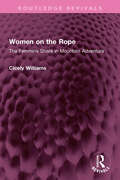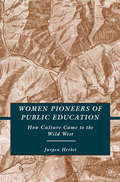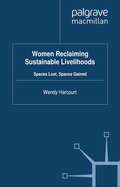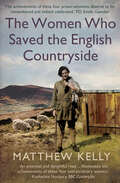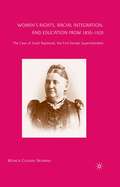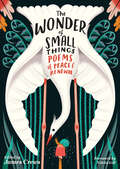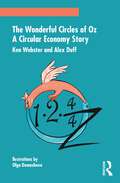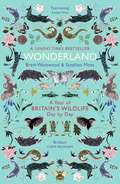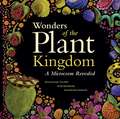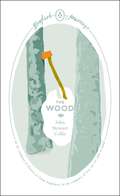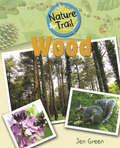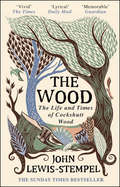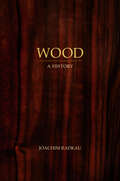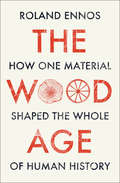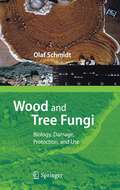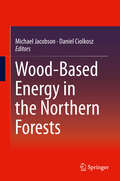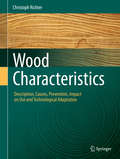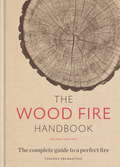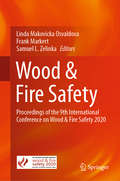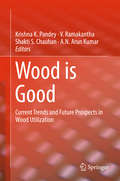- Table View
- List View
Women on the Rope: The Feminine Share in Mountain Adventure (Routledge Revivals)
by Cicely WilliamsFirst published in 1973, Women on the Rope provides the first consecutive story of the ‘feminine share in mountain adventure’, a share which has grown from tiny beginnings in 1808 to a level at which women have won their place at Everest expeditions. Cicely Williams provides a book which combines exact and detailed knowledge of a little-known chapter of human enterprise with that zest for life and love of mountains that have brought her so many friends. This is a book for mountaineers, for social historians, and for the fireside connoisseur of good storytelling.
Women Pioneers of Public Education: How Culture Came to the Wild West
by J. HerbstThe book narrates the story of how the school, founded by women pioneers of public education in a Rocky Mountain mining settlement, became the centre and sustaining force of the town's community life from its beginning in the 1870s to the present day.
Women Reclaiming Sustainable Livelihoods: Spaces Lost, Spaces Gained (Gender, Development and Social Change)
by Wendy HarcourtThis volume highlights women's work sustaining local economies and environments, particularly in response to the current food, fuel and climate crises. It includes women's role in the green entrepreneurship, women's reproductive and productive work in the care economy, and a further examination of eco feminist debates.
The Women Who Saved the English Countryside
by Matthew KellyA vibrant history of English landscape preservation over the last 150 years, told through the lives of four remarkable women In Britain today, a mosaic of regulations protects the natural environment and guarantees public access to green spaces. But this was not always so. Over the last 150 years, activists have campaigned tirelessly for the right to roam through the countryside and the vital importance of preserving Britain’s natural beauty. Matthew Kelly traces the history of landscape preservation through the lives of four remarkable women: Octavia Hill, Beatrix Potter, Pauline Dower, and Sylvia Sayer. From the commons of London to the Lake District, Northumberland, and Dartmoor, these women protected the English landscape at a crucial period through a mixture of environmental activism, networking, and sheer determination. They grappled with the challenges that urbanization and industrial modernity posed to human well-being as well as the natural environment. By tirelessly seeking to reconcile the needs of particular places to the broader public interest they helped re-imagine the purpose of the English countryside for the democratic age.
Women's Education in the United States, 1780-1840
by M. NashPlease note this is a 'Palgrave to Order' title. Stock of this book requires shipment from overseas. It will be delivered to you within 12 weeks. Winner of 2005 American Educational Studies Association (AESA) Critic's Choice Award, this is a groundbreaking from Margaret Nash examining the development of women's education.
Women’s Rights, Racial Integration, and Education from 1850–1920: The Case of Sarah Raymond, the First Female Superintendent
by M. NoraianThis historical biography examines Sarah Raymond Fitzwilliam's abolitionist roots growing up on a stop of the Underground Railroad, her training at a 'normal school,' her tenure as a teacher, principal and the nation's first city school superintendent (Bloomington, Illinois 1874-1892).
The Wonder of Small Things: Poems of Peace and Renewal
by James CrewsThe editor of the bestselling poetry anthologies How to Love the World and The Path to Kindness presents a collection of highly accessible, uplifting poetry celebrating the small wonders and peaceful moments of everyday life. James Crews, editor of two best-selling poetry anthologies, How to Love the World and The Path to Kindness, presents an all-new collection of highly accessible poems on the theme of celebrating moments of wonder and peace in everyday life. As Crews writes in the introduction: "[A] deep love for the world is present in every one of the poems gathered in this book. Wonder calls us back to the curiosity we are each born with, and it makes us want to move closer to what sparks our attention. Wonder opens our senses and helps us stay in touch with a humbling sense of our own human smallness in the face of unexpected beauty and the delicious mysteries of life on this planet." The anthology features a foreword by Nikita Gill and a carefully curated selection of poems from a diverse range of authors, including Native American poets Joy Harjo, Linda Hogan, Kimberly Blaeser, and Joseph Bruchac, and BIPOC writers Ross Gay, Julia Alvarez, and Toi Derricotte. Crews features new poems from popular writers such as Natalie Goldberg, Mark Nepo, Ted Kooser, Naomi Shihab Nye, Jane Hirshfield, and Jacqueline Suskin, along with selections from emerging poets. Readers are guided in exploring the meaning and essence of the poems through a series of reflective pauses scattered through the pages and reading group questions in the back. This anthology offers the perfect intersection for the growing number of readers interested in mindful living and bringing poetry into their everyday lives.
The Wonderful Circles of Oz: A Circular Economy Story
by Ken Webster Alex DuffWith the world’s economies impacted by coronavirus, billions are feeling social, environmental, and economic injustices. The call for a new, more just, more distributive economic story and system is louder and more urgent than ever. The Wonderful Circles of Oz provides both the framework and solutions for navigating towards an effective circular economy – the gateway to an abundant, autonomous, and democratic future. Widely regarded as one of the world’s most engaging circular economy thought leaders, Ken Webster, together with creative writer, Alex Duff, use a storytelling approach based on The Wonderful Wizard of Oz to offer a new, accessible, and compelling narrative about the future direction of our economy. ‘The harder you work, the more you’ll improve your lot.’ That’s the simple story we’ve been sold over the last 40 years to justify how today’s economy works. Yet extreme inequality, the devastation of our natural world, and the erosion of our communities tell us this economic story resembles a work of fiction and the way our extractive economy operates is not fit for purpose. Still a restoration narrative, a satisfying story about our future and how we’ll get there, is slow to emerge. Using allegory, commentary, and reflection, this book helps speed the shift from an extractive economy of materials, energy, and finance to one based on an effective circular economy, which builds wealth as a stock of solutions accessible to all. The Wonderful Circles of Oz goes beyond tired debates (capital vs labour and market vs state) and blends fiction and non to effectively communicate the need for macro-economic system redesign. Exploring complex change and containing echoes of modern monetary theory, this book is a must for business professionals, students, and anyone with an interest in the circular economy.
The Wonderful Circles of Oz: A Circular Economy Story
by Ken Webster Alex DuffWith the world’s economies impacted by coronavirus, billions are feeling social, environmental, and economic injustices. The call for a new, more just, more distributive economic story and system is louder and more urgent than ever. The Wonderful Circles of Oz provides both the framework and solutions for navigating towards an effective circular economy – the gateway to an abundant, autonomous, and democratic future. Widely regarded as one of the world’s most engaging circular economy thought leaders, Ken Webster, together with creative writer, Alex Duff, use a storytelling approach based on The Wonderful Wizard of Oz to offer a new, accessible, and compelling narrative about the future direction of our economy. ‘The harder you work, the more you’ll improve your lot.’ That’s the simple story we’ve been sold over the last 40 years to justify how today’s economy works. Yet extreme inequality, the devastation of our natural world, and the erosion of our communities tell us this economic story resembles a work of fiction and the way our extractive economy operates is not fit for purpose. Still a restoration narrative, a satisfying story about our future and how we’ll get there, is slow to emerge. Using allegory, commentary, and reflection, this book helps speed the shift from an extractive economy of materials, energy, and finance to one based on an effective circular economy, which builds wealth as a stock of solutions accessible to all. The Wonderful Circles of Oz goes beyond tired debates (capital vs labour and market vs state) and blends fiction and non to effectively communicate the need for macro-economic system redesign. Exploring complex change and containing echoes of modern monetary theory, this book is a must for business professionals, students, and anyone with an interest in the circular economy.
Wonderful Water: Wonderful Water (Go Green #2)
by Helen Lanz'Go Green: Wonderful Water' looks at our world's most precious resource - water - and explains the steps we can all take to save it every day.Packed with statistics, useful information and handy tips, each title in the tells us what steps we can all take to `go green`.
Wonderland: A Year of Britain's Wildlife, Day by Day
by Stephen Moss Brett WestwoodA SUNDAY TIMES BESTSELLER'Vibrant, fascinating, poetic - a year in living things: all the things we love, all the things we wish we could, all the little things we step over and never know - the best of British wildlife from two superb naturalists and writers' CHRIS PACKHAMFrom blackbirds, beavers and beetles to tawny owls, natterjack toads and lemon slugs. Every day of the year, winter or summer, in every corner of the British Isles, there's plenty to see if you know where - and how - to look. From encounters with the curious black redstart, which winters on our rocky coasts, to the tiny green snowdrop shoots that are the first sign that spring might be round the corner. And from the blossom-time and dawn choruses of April and May into the abundant noisiness of summer, where days start with hawker dragonflies and drowsy bumblebees and end with glow-worms and ghost moths; to autumn when in the early morning mist of London's Richmond Park male red deer lock horns in competition for a mate.Nature is always full of surprises - whether it's the strange behaviour of clothes moths or the gruesome larder of the strike. Distilling two lifetimes' knowledge, expert insight and enthusiasm, award-winning authors and passionate naturalists Brett Westwood and Stephen Moss take us through the year, day by day, sharing the unexpected delights that we can experience in our skies, beaches, rivers, fields, forests and back gardens. There are all kinds of adventures waiting on your doorstep, any day of the year, all you need is Wonderland.
Wonders of the Plant Kingdom: A Microcosm Revealed
by Wolfgang Stuppy Rob Kesseler Madeline HarleyCompared to the obvious complexity of animals, plants at a glance seem relatively simple in form. But that simplicity is deceptive: the plants around us are the result of millennia of incredible evolutionary adaptations that have allowed them to survive, and thrive, under wildly changing conditions and in remarkably specific ecological niches. Much of this innovation, however, is invisible to the naked eye. With Wonders of the Plant Kingdom, the naked eye gets an unforgettable boost. A stunning collaboration between science and art, this gorgeous book presents hundreds of images of plants taken with a scanning electron microscope and hand-colored by artist Rob Kesseler to reveal the awe-inspiring adaptations all around us. The surface of a peach—with its hairs, or trichomes, and sunken stomata, or breathing pores—emerges from these pages in microscopic detail. The dust-like seeds of the smallest cactus species in the world, the Blossfeldia liliputana—which measures just twelve millimeters fully grown—explode here with form, color, and character, while the flower bud of a kaffir lime, cross-sectioned, reveals the complex of a flower bud with the all-important pistil in the center. Accompanying these extraordinary images are up-to-date explanations of the myriad ways that these plants have ensured their own survival—and, by proxy, our own. Gardeners and science buffs alike will marvel at this wholly new perspective on the world of plant diversity.
Wonders of the Plant Kingdom: A Microcosm Revealed
by Wolfgang Stuppy Rob Kesseler Madeline HarleyCompared to the obvious complexity of animals, plants at a glance seem relatively simple in form. But that simplicity is deceptive: the plants around us are the result of millennia of incredible evolutionary adaptations that have allowed them to survive, and thrive, under wildly changing conditions and in remarkably specific ecological niches. Much of this innovation, however, is invisible to the naked eye. With Wonders of the Plant Kingdom, the naked eye gets an unforgettable boost. A stunning collaboration between science and art, this gorgeous book presents hundreds of images of plants taken with a scanning electron microscope and hand-colored by artist Rob Kesseler to reveal the awe-inspiring adaptations all around us. The surface of a peach—with its hairs, or trichomes, and sunken stomata, or breathing pores—emerges from these pages in microscopic detail. The dust-like seeds of the smallest cactus species in the world, the Blossfeldia liliputana—which measures just twelve millimeters fully grown—explode here with form, color, and character, while the flower bud of a kaffir lime, cross-sectioned, reveals the complex of a flower bud with the all-important pistil in the center. Accompanying these extraordinary images are up-to-date explanations of the myriad ways that these plants have ensured their own survival—and, by proxy, our own. Gardeners and science buffs alike will marvel at this wholly new perspective on the world of plant diversity.
The Wood (Penguin English Journeys)
by John Stewart CollisAn academic and writer, during the Second World War John Stewart Collis was put to agricultural work. Clearing and thinning an Ash wood, he found a meditative peace and an earnest pleasure in the use of axe and bill-hook. The Wood contains his beautiful, thoughtful writing on the joys of nature and of a life of activity, how a love of the sun affects a man, and the progression of nature that sees each plant - hawthorn, honeysuckle, larch, elder - have its hour.Generations of inhabitants have helped shape the English countryside - but it has profoundly shaped us too.It has provoked a huge variety of responses from artists, writers, musicians and people who live and work on the land - as well as those who are travelling through it.English Journeys celebrates this long tradition with a series of twenty books on all aspects of the countryside, from stargazey pie and country churches, to man's relationship with nature and songs celebrating the patterns of the countryside (as well as ghosts and love-struck soldiers).
Wood: Wood (Nature Trail #1)
by Jen GreenThe purpose of this series is to show children the habitats around them. The books will guide a child through their personal exploration of different habitats. The reader will be encouraged to use key science skills to plan, observe, collect, record and and preserve their findings on their trail of nature.
The Wood: The Life & Times of Cockshutt Wood
by John Lewis-StempelTHE SUNDAY TIMES BESTSELLER by 'Indisputably, one of the best nature-writers of his generation' (Country Life) BBC Radio 4 'Book of the Week' Written in diary format, The Wood is the story of English woodlands as they change with the seasons. Lyrical and informative, steeped in poetry and folklore, The Wood inhabits the mind and touches the soul.For four years John Lewis-Stempel managed Cockshutt wood, a particular wood - three and half acres of mixed woodland in south west Herefordshire - that stands as exemplar for all the small woods of England. John coppiced the trees and raised cows and pigs who roamed free there. This is the diary of the last year, by which time he had come to know it from the bottom of its beech roots to the tip of its oaks, and to know all the animals that lived there - the fox, the pheasants, the wood mice, the tawny owl - and where the best bluebells grew. For many fauna and flora, woods like Cockshutt are the last refuge. It proves a sanctuary for John too. To read The Wood is to be amongst its trees as the seasons change, following an easy path until, suddenly the view is broken by a screen of leaves, or your foot catches on a root, or a bird startles overhead. This is a wood you will never want to leave.
Wood: A History
by Joachim RadkauÖtzi the iceman could not do without wood when he was climbing his Alpine glacier, nor could medieval cathedral-builders or today's construction companies. From time immemorial, the skill of the human hand has developed by working wood, so much so that we might say that the handling of wood is a basic element in the history of the human body. The fear of a future wood famine became a panic in the 18th century and sparked the beginnings of modern environmentalism. This book traces the cultural history of wood and offers a highly original account of the connection between the raw material and the human beings who benefit from it. Even more, it shows that wood can provide a key for a better understanding of history, of the pecularities as well as the varieties of cultures, of a co-evolution of nature and culture, and even of the rise and fall of great powers. Beginning with Stone Age hunters, it follows the twists and turns of the story through the Middle Ages and the Industrial Revolution to the global society of the twenty-first century, in which wood is undergoing a varied and unexpected renaissance. Radkau is sceptical of claims that wood is about to disappear, arguing that such claims are self-serving arguments promoted by interest groups to secure cheaper access to, and control over, wood resources. The whole forest and timber industry often strikes the outsider as a world unto itself, a hermetically sealed black box, but when we lift the lid on this box, as Radkau does here, we will be surprised by what we find within. Wide-ranging and accessible, this rich historical analysis of one of our most cherished natural resources will find a wide readership.
Wood: A History
by Joachim RadkauÖtzi the iceman could not do without wood when he was climbing his Alpine glacier, nor could medieval cathedral-builders or today's construction companies. From time immemorial, the skill of the human hand has developed by working wood, so much so that we might say that the handling of wood is a basic element in the history of the human body. The fear of a future wood famine became a panic in the 18th century and sparked the beginnings of modern environmentalism. This book traces the cultural history of wood and offers a highly original account of the connection between the raw material and the human beings who benefit from it. Even more, it shows that wood can provide a key for a better understanding of history, of the pecularities as well as the varieties of cultures, of a co-evolution of nature and culture, and even of the rise and fall of great powers. Beginning with Stone Age hunters, it follows the twists and turns of the story through the Middle Ages and the Industrial Revolution to the global society of the twenty-first century, in which wood is undergoing a varied and unexpected renaissance. Radkau is sceptical of claims that wood is about to disappear, arguing that such claims are self-serving arguments promoted by interest groups to secure cheaper access to, and control over, wood resources. The whole forest and timber industry often strikes the outsider as a world unto itself, a hermetically sealed black box, but when we lift the lid on this box, as Radkau does here, we will be surprised by what we find within. Wide-ranging and accessible, this rich historical analysis of one of our most cherished natural resources will find a wide readership.
The Wood Age: How One Material Shaped The Whole Of Human History
by Roland EnnosRoland Ennos’ The Wood Age is a love-letter to the world’s most vital and yet most threatened material. It is the story of how wood has shaped our human experience from the earliest foragers to the modern four poster bed.
Wood and Tree Fungi: Biology, Damage, Protection, and Use
by Olaf SchmidtThis book provides an up-to-date overview of the various wood and tree fungi that damage trees, lumber, and timber. Special focus is given to identification, prevention, and remediation techniques, and the book bridges the gap between research and application. It covers the fundamentals of cytology and morphology. There is a more practical section describing damage by viruses and bacteria on trees. The habitats of wood fungi are described as well as tree care. Important tree pathogens and wood decay fungi are characterized for prevention and identification. The final section focuses on the positive effects of wood-inhabiting microorganisms.
Wood-Based Energy in the Northern Forests
by Michael Jacobson and Daniel CiolkoszThis unique book provides the first comprehensive overview of wood based bioenergy in the northern hardwood forests of the Eastern United States. This includes a holistic look at the topic of wood based bioenergy, as well as focused analyses of key topics. This book is relevant to engineers, project developers, foresters, economists, sociologists, environmental scientists and natural resource managers. Most chapters also provide practical hands-on advice for the practitioner, and provide a valuable resource for anyone who is considering developing a woody bioenergy project.
Wood Characteristics: Description, Causes, Prevention, Impact on Use and Technological Adaptation
by Christoph RichterThis book offers a broad range of options for technically adapting, handling and processing wood with specific wood characteristics. It starts by discussing wood anatomy and the general factors leading to the formation of wood characteristics. The individual characteristics are then categorized into four groups: 1. Wood characteristics inherent in a tree’s natural growth. 2. Biotically-induced wood characteristics. 3. Abiotically-induced wood characteristics. 4. Types and causes of cracks.New to this English edition is a comparison of wood characteristics found in trees from the boreal, temperate and tropical climate zones. The results show a clear relationship between the effects of sunshine duration, the vertical and horizontal angle of radiation, and crown coverage and the way wood characteristics form.The book addresses all those who work with wood professionally: foresters, gardeners and arborists who want to be able to observe a living tree and identify its internal features and the causes of its prominent wood characteristics. Based on the findings described in this book they can determine how to avoid certain undesirable characteristics, or alternatively how to promote favorable ones as the tree and stand grow. Botanists and dendrologists will learn how wood characteristics arise, and how they affect living trees and wood products. The needs of wood technologists seeking to prevent adverse wood characteristics from influencing wood processing, or to enhance favorable wood characteristics, are also addressed.
The Wood Fire Handbook: The complete guide to a perfect fire
by Vincent Thurkettle'Sound, well-seasoned advice [on] how to bring wood fires into our lives.' - BBC CountryfileThe Wood Fire Handbook shows you that the soothing effect of dancing flames and glowing embers is a simple pleasure to have in our lives. Understanding everything that underpins the perfect wood fire makes it even more enjoyable. Vincent Thurkettle's handbook is the essential companion and manual.The expert insight and knowledge in this book allow everyone to rediscover the skills of previous generations and savour the delight of a perfect wood fire in all its incarnations.Contents include...Understand which trees make the best firewoodLearn how to split, season, and store woodLay the perfect fireMake an ingenious campfireChoose wood for its scent...and much more!This revised edition features updated information on wood-burning stoves, 'clean' wood and other environmental considerations.
Wood & Fire Safety: Proceedings of the 9th International Conference on Wood & Fire Safety 2020
by Linda Makovicka Osvaldova Frank Markert Samuel L. ZelinkaThis proceedings volume presents new scientific works of the research workers and experts from the field of Wood Science & Fire.It looks into the properties of various tree species across the continents affecting the fire-technical properties of wood and wood-based materials, its modifications, fire-retardant methods and other technological processes that have an impact on wood ignition and burning. The results of these findings have a direct impact on Building Construction and Design describing the fire safety of wooden buildings, mainly large and multi-story ones. The results of these experiments and findings may be applied, or are directly implemented into Fire Science, Hazard Control, Building Safety which makes the application of wood and wood materials in buildings possible, while maintaining strict fire regulations.One part of the contributions focuses on the symbiosis of the material and the fire-fighting technologies. Wood burning has its own specific features, therefore, the fire protection technologies need to be updated regularly. It also includes the issue of the intervention of fire-fighting and rescue teams in the fires of wooden buildings. Presentations deal with the issue of forest fires influenced by the climate changes, relief, fuel models based on the type and the age of the forest stand.
Wood is Good: Current Trends and Future Prospects in Wood Utilization
by Krishna K. Pandey V. Ramakantha Shakti S. Chauhan A.N. Arun KumarThis book is a compilation of selected papers presented in the International Conference on the theme ‘Wood is Good: Current Trends and Future Prospects in Wood’. The contents of the book deal with recent innovations, trends and challenges in wood science and are grouped in five distinct sections. They cover a wide range of topics like wood variability, processing and utilization, wood protection, wood-based composites, wood energy and the role of wood in mitigating climate change. With the ever increasing human population and growing demand for wood, this book offers valuable insights for better understanding and efficient utilization of this wonderful gift of nature. This book will be useful to researchers, professionals, and policy makers involved in forestry and wood related areas.
